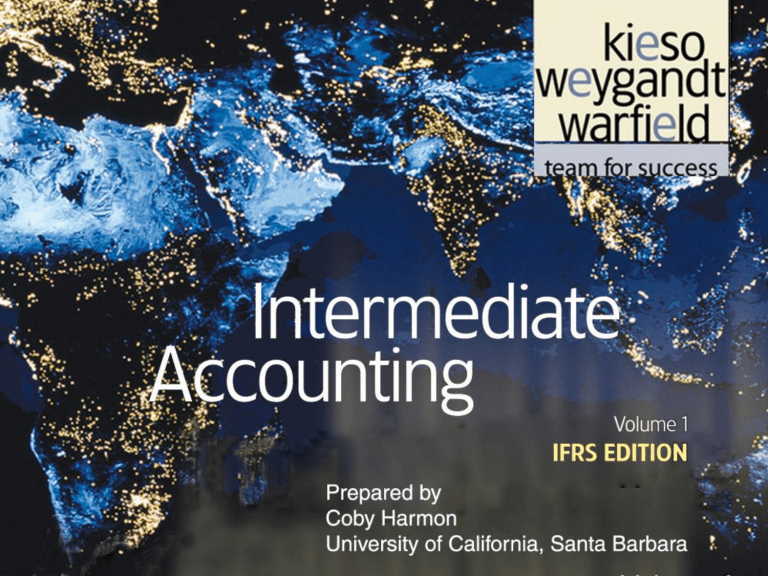
10-1 CHAPTER 10 ACQUISITION AND DISPOSITION OF PROPERTY, PLANT, AND EQUIPMENT Intermediate Accounting IFRS Edition Kieso, Weygandt, and Warfield 10-2 Learning Objectives 1. Describe property, plant, and equipment. 2. Identify the costs to include in initial valuation of property, plant, and equipment. 3. Describe the accounting problems associated with self-constructed assets. 4. Describe the accounting problems associated with interest capitalization. 5. Understand accounting issues related to acquiring and valuing plant assets. 6. Describe the accounting treatment for costs subsequent to acquisition. 7. Describe the accounting treatment for the disposal of property, plant, and equipment. 10-3 Acquisition and Disposition of Property, Plant, and Equipment Cost Subsequent to Acquisition Acquisition Valuation Acquisition costs: land, buildings, equipment Cash discounts Additions Sale Deferred contracts Improvements and replacements Involuntary conversion Self-constructed assets Interest costs Observations Lump-sum purchases Stock issuance Non-monetary exchanges Government grants 10-4 Rearrangement and reorganization Repairs Summary Dispositions Property, Plant, and Equipment Property, plant, and equipment is defined as tangible assets that are held for use in production or supply of goods and services, for rentals to others, or for administrative purposes; they are expected to be used during more than one period. ► ► “Used in operations” and not for Includes: resale. Land, Long-term in nature and usually depreciated. ► 10-5 Building structures (offices, factories, warehouses), and Possess physical substance. Equipment (machinery, furniture, tools). LO 1 Describe property, plant, and equipment. Acquisition of PP&E Historical cost measures the cash or cash equivalent price of obtaining the asset and bringing it to the location and condition necessary for its intended use. Companies value property, plant, and equipment in subsequent periods using either the 10-6 cost method or fair value (revaluation) method. LO 2 Identify the costs to include in initial valuation of property, plant, and equipment. Acquisition of PP&E Cost of Land Includes all costs to acquire land and ready it for use. Costs typically include: (1) purchase price; (2) closing costs, such as title to the land, attorney’s fees, and recording fees; (3) costs of grading, filling, draining, and clearing; (4) assumption of any liens, mortgages, or encumbrances on the property; and (5) additional land improvements that have an indefinite life. 10-7 LO 2 Acquisition of PP&E Cost of Land Improvements with limited lives, such as private driveways, walks, fences, and parking lots, are recorded as Land Improvements and depreciated. ► Land acquired and held for speculation is classified as an investment. ► Land held by a real estate concern for resale should be classified as inventory. 10-8 LO 2 Identify the costs to include in initial valuation of property, plant, and equipment. Acquisition of PP&E Cost of Buildings Includes all costs related directly to acquisition or construction. Cost typically include: (1) materials, labor, and overhead costs incurred during construction and (2) professional fees and building permits. 10-9 LO 2 Identify the costs to include in initial valuation of property, plant, and equipment. Acquisition of PP&E Cost of Equipment Include all costs incurred in acquiring the equipment and preparing it for use. Costs typically include: (1) purchase price, (2) freight and handling charges (3) insurance on the equipment while in transit, (4) cost of special foundations if required, (5) assembling and installation costs, and (6) costs of conducting trial runs. 10-10 LO 2 Identify the costs to include in initial valuation of property, plant, and equipment. Acquisition of PP&E E10-1 (variation): The expenditures and receipts below are related to land, land improvements, and buildings acquired for use in a business enterprise. Determine how the following should be classified: Classification (a) Money borrowed to pay building contractor (b) Payment for construction from note proceeds Notes Payable Building (c) Cost of land fill and clearing Land (d) Delinquent real estate taxes on property assumed Land (e) Premium on 6-month insurance policy during construction (f) 10-11 Refund of 1-month insurance premium because construction completed early Building (Building) LO 2 Identify the costs to include in initial valuation of property, plant, and equipment. Acquisition of PP&E E10-1 (variation): The expenditures and receipts below are related to land, land improvements, and buildings acquired for use in a business enterprise. Determine how the following should be classified: Classification (g) Architect’s fee on building Building (h) Cost of real estate purchased as a plant site (land €200,000 and building €50,000) Land (i) Commission fee paid to real estate agency Land (j) Installation of fences around property Land Improvements (k) Cost of razing and removing building Land (l) (Land) Proceeds from salvage of demolished building (m) Cost of parking lots and driveways (n) Cost of trees and shrubbery (permanent) 10-12 Land Improvements Land LO 2 Acquisition of PP&E Self-Constructed Assets Costs typically include: (1) Materials and direct labor (2) Overhead can be handled in two ways: 1. Assign no fixed overhead 2. Assign a portion of all overhead to the construction process. Companies use the second method extensively. 10-13 LO 3 Describe the accounting problems associated with self-constructed assets. Acquisition of PP&E Interest Costs During Construction Three approaches have been suggested to account for the interest incurred in financing the construction. Illustration 10-1 $0 Capitalize no interest during construction Increase to Cost of Asset Capitalize actual costs incurred during construction (with modification) $? Capitalize all costs of funds IFRS 10-14 LO 4 Describe the accounting problems associated with interest capitalization. Acquisition of PP&E Interest Costs During Construction IFRS requires — capitalizing actual interest (with modification). Consistent with historical cost. Capitalization considers three items: 1. Qualifying assets. 2. Capitalization period. 3. Amount to capitalize. 10-15 LO 4 Describe the accounting problems associated with interest capitalization. Acquisition of PP&E Qualifying Assets Require a substantial period of time to get them ready for their intended use. Two types of assets: ► Assets under construction for a company’s own use. ► Assets intended for sale or lease that are constructed or produced as discrete projects. 10-16 LO 4 Describe the accounting problems associated with interest capitalization. Acquisition of PP&E Capitalization Period Begins when: 1. Expenditures for the asset have been made. 2. Activities for readying the asset are in progress . 3. Interest costs are being incurred. Ends when: The asset is substantially complete and ready for use. 10-17 LO 4 Describe the accounting problems associated with interest capitalization. Acquisition of PP&E Amount to Capitalize Capitalize the lesser of: 1. Actual interest costs 2. Avoidable interest - the amount of interest that could have been avoided if expenditures for the asset had not been made. 10-18 LO 4 Describe the accounting problems associated with interest capitalization. Acquisition of PP&E Interest Capitalization Illustration: Blue Corporation borrowed $200,000 at 12% interest from State Bank on Jan. 1, 2011, for specific purposes of constructing special-purpose equipment to be used in its operations. Construction on the equipment began on Jan. 1, 2011, and the following expenditures were made prior to the project’s completion on Dec. 31, 2011: Actual Expenditures: January 1, 2011 April 30, 2011 150,000 November 1, 2011 300,000 December 31, 2011 100,000 Total expenditures 10-19 $100,000 $650,000 Other general debt existing on Jan. 1, 2011: $500,000, 14%, 10-year bonds payable $300,000, 10%, 5-year note payable LO 4 Describe the accounting problems associated with interest capitalization. Acquisition of PP&E Step 1 - Determine which assets qualify for capitalization of interest. Special purpose equipment qualifies because it requires a period of time to get ready and it will be used in the company’s operations. Step 2 - Determine the capitalization period. The capitalization period is from Jan. 1, 2011 through Dec. 31, 2011, because expenditures are being made and interest costs are being incurred during this period while construction is taking place. 10-20 LO 4 Describe the accounting problems associated with interest capitalization. Acquisition of PP&E Step 3 - Compute weighted-average accumulated expenditures. Weighted Date Jan. 1 Apr. 30 Nov. 1 Dec. 31 Average Actual Capitalization Accumulated Expenditures Period Expenditures $ 100,000 12/12 $ 100,000 150,000 8/12 100,000 300,000 2/12 50,000 100,000 0/12 $ 650,000 $ 250,000 A company weights the construction expenditures by the amount of time (fraction of a year or accounting period) that it can incur interest cost on the expenditure. 10-21 LO 4 Describe the accounting problems associated with interest capitalization. Acquisition of PP&E Step 4 - Compute the Actual and Avoidable Interest. Selecting Appropriate Interest Rate: 1. For the portion of weighted-average accumulated expenditures that is less than or equal to any amounts borrowed specifically to finance construction of the assets, use the interest rate incurred on the specific borrowings. 2. For the portion of weighted-average accumulated expenditures that is greater than any debt incurred specifically to finance construction of the assets, use a weighted average of interest rates incurred on all other outstanding debt during the period. 10-22 LO 4 Describe the accounting problems associated with interest capitalization. Acquisition of PP&E Step 4 - Compute the Actual and Avoidable Interest. Actual Interest Specific Debt $ Debt 200,000 $ 500,000 300,000 1,000,000 General Debt Avoidable Interest 10-23 Interest Rate 12% Actual Interest $ 24,000 14% 10% $ 70,000 30,000 124,000 Accumulated Expenditures $ 200,000 50,000 $ 250,000 Interest Rate 12% 12.5% Weighted-average interest rate on general debt $100,000 $800,000 = 12.5% Avoidable Interest $ 24,000 6,250 $ 30,250 LO 4 Describe the accounting problems associated with interest capitalization. Acquisition of PP&E Step 5 – Capitalize the lesser of Avoidable interest or Actual interest. Avoidable interest $ Actual interest 30,250 124,000 Journal entry to Capitalize Interest: Equipment Interest expense 10-24 30,250 30,250 LO 4 Describe the accounting problems associated with interest capitalization. Acquisition of PP&E Comprehensive Illustration: On November 1, 2010, Shalla Company contracted Pfeifer Construction Co. to construct a building for $1,400,000 on land costing $100,000 (purchased from the contractor and included in the first payment). Shalla made the following payments to the construction company during 2011. 10-25 LO 4 Describe the accounting problems associated with interest capitalization. Acquisition of PP&E Pfeifer Construction completed the building, ready for occupancy, on December 31, 2011. Shalla had the following debt outstanding at December 31, 2011. Specific Construction Debt 1. 15%, 3-year note to finance purchase of land and construction of the building, dated December 31, 2010, with interest payable annually on December 31 Other Debt 2. 10%, 5-year note payable, dated December 31, 2007, with interest payable annually on December 31 3. 12%, 10-year bonds issued December 31, 2006, with interest payable annually on December 31 $750,000 $550,000 $600,000 Compute weighted-average accumulated expenditures for 2011. 10-26 LO 4 Describe the accounting problems associated with interest capitalization. Acquisition of PP&E Compute weighted-average accumulated expenditures for 2011. Illustration 10-4 10-27 LO 4 Describe the accounting problems associated with interest capitalization. Acquisition of PP&E Compute the avoidable interest. Illustration 10-5 10-28 LO 4 Describe the accounting problems associated with interest capitalization. Acquisition of PP&E Compute the actual interest cost, which represents the maximum amount of interest that it may capitalize during 2011, Illustration 10-6 The interest cost that Shalla capitalizes is the lesser of $120,228 (avoidable interest) and $239,500 (actual interest), or $120,228. 10-29 LO 4 Describe the accounting problems associated with interest capitalization. Acquisition of PP&E Shalla records the following journal entries during 2011: January 1 March 1 May 1 December 31 10-30 Land Building (or CIP) Cash 100,000 110,000 Building Cash 300,000 Building Cash 540,000 Building Cash Building (Capitalized Interest) Interest Expense Cash 450,000 210,000 300,000 540,000 450,000 120,228 119,272 239,500 LO 4 Describe the accounting problems associated with interest capitalization. Acquisition of PP&E At December 31, 2011, Shalla discloses the amount of interest capitalized either as part of the income statement or in the notes accompanying the financial statements. Illustration 10-7 Illustration 10-8 10-31 LO 4 Describe the accounting problems associated with interest capitalization. Acquisition of PP&E Special Issues Related to Interest Capitalization 1. Expenditures for land. ► Interest costs capitalized are part of the cost of the plant, not the land. 2. Interest revenue. ► 10-32 Interest revenue should be offset against interest cost when determining the amount of interest to capitalized. LO 4 Describe the accounting problems associated with interest capitalization. Valuation of PP&E Companies should record property, plant, and equipment: ► at the fair value of what they give up or ► at the fair value of the asset received, whichever is more clearly evident. 10-33 LO 5 Understand accounting issues related to acquiring and valuing plant assets. Valuation of PP&E Cash Discounts — Whether taken or not — generally considered a reduction in the cost of the asset. Deferred-Payment Contracts — Assets, purchased through long term credit, are recorded at the present value of the consideration exchanged. Lump-Sum Purchases — Allocate the total cost among the various assets on the basis of their fair market values. Issuance of Shares — The market value of the shares issued is a fair indication of the cost of the property acquired. 10-34 LO 5 Understand accounting issues related to acquiring and valuing plant assets. Valuation of PP&E Exchanges of Nonmonetary Assets Ordinarily accounted for on the basis of: ► the fair value of the asset given up or ► the fair value of the asset received, whichever is clearly more evident. Companies should recognize immediately any gains or losses on the exchange when the transaction has commercial substance. 10-35 LO 5 Understand accounting issues related to acquiring and valuing plant assets. Valuation of PP&E Meaning of Commercial Substance Exchange has commercial substance if the future cash flows change as a result of the transaction. That is, if the two parties’ economic positions change, the transaction has commercial substance. Illustration 10-10 10-36 LO 5 Understand accounting issues related to acquiring and valuing plant assets. Valuation of PP&E Exchanges - Loss Situation Companies recognize a loss immediately whether the exchange has commercial substance or not. Rationale: Companies should not value assets at more than their cash equivalent price; if the loss were deferred, assets would be overstated. 10-37 LO 5 Understand accounting issues related to acquiring and valuing plant assets. Valuation of PP&E Illustration: Information Processing, Inc. trades its used machine for a new model at Jerrod Business Solutions Inc. The exchange has commercial substance. The used machine has a book value of $8,000 (original cost $12,000 less $4,000 accumulated depreciation) and a fair value of $6,000. The new model lists for $16,000. Jerrod gives Information Processing a trade-in allowance of $9,000 for the used machine. Information Processing computes the cost of the new asset as follows. Illustration 10-11 10-38 LO 5 Understand accounting issues related to acquiring and valuing plant assets. Valuation of PP&E Illustration: Information Processing records this transaction as follows: Equipment 13,000 Accumulated Depreciation—Equipment 4,000 Loss on Disposal of Equipment 2,000 Equipment Cash 12,000 7,000 Illustration 10-12 Loss on Disposal 10-39 LO 5 Understand accounting issues related to acquiring and valuing plant assets. Valuation of PP&E Exchanges - Gain Situation Has Commercial Substance. Company usually records the cost of a nonmonetary asset acquired in exchange for another nonmonetary asset at the fair value of the asset given up, and immediately recognizes a gain. 10-40 LO 5 Understand accounting issues related to acquiring and valuing plant assets. Valuation of PP&E Illustration: Interstate Transportation Company exchanged a number of used trucks plus cash for a semi-truck. The used trucks have a combined book value of $42,000 (cost $64,000 less $22,000 accumulated depreciation). Interstate’s purchasing agent, experienced in the second-hand market, indicates that the used trucks have a fair market value of $49,000. In addition to the trucks, Interstate must pay $11,000 cash for the semi-truck. Interstate computes the cost of the semi-truck as follows. Illustration 10-13 10-41 LO 5 Understand accounting issues related to acquiring and valuing plant assets. Valuation of PP&E Illustration: Interstate records the exchange transaction as follows: Semi-truck 60,000 Accumulated Depreciation—Trucks 22,000 Trucks Gain on disposal of Used Trucks Cash 64,000 7,000 11,000 Illustration 10-14 Gain on Disposal 10-42 LO 5 Understand accounting issues related to acquiring and valuing plant assets. Valuation of PP&E Exchanges - Gain Situation Lacks Commercial Substance. Now assume that Interstate Transportation Company exchange lacks commercial substance. That is, the economic position of Interstate did not change significantly as a result of this exchange. In this case, Interstate defers the gain of $7,000 and reduces the basis of the semi-truck. 10-43 LO 5 Understand accounting issues related to acquiring and valuing plant assets. Valuation of PP&E Illustration: Interstate records the exchange transaction as follows: Semi-truck 53,000 Accumulated Depreciation—Trucks 22,000 Trucks 64,000 Cash 11,000 Illustration 10-15 10-44 LO 5 Understand accounting issues related to acquiring and valuing plant assets. Valuation of PP&E Summary of Gain and Loss Recognition on Exchanges of Non-Monetary Assets Illustration 10-16 Disclosure include: 10-45 nature of the transaction(s), method of accounting for the assets exchanged, and gains or losses recognized on the exchanges. LO 5 Understand accounting issues related to acquiring and valuing plant assets. Valuation of PP&E E10-19: Santana Company exchanged equipment used in its manufacturing operations plus $2,000 in cash for similar equipment used in the operations of Delaware Company. The following information pertains to the exchange. Equipment (cost) Accumulated Depreciation Fair value of equipment Cash given up Santana $28,000 19,000 13,500 2,000 Delaware $28,000 10,000 15,500 Instructions: Prepare the journal entries to record the exchange on the books of both companies. 10-46 LO 5 Understand accounting issues related to acquiring and valuing plant assets. Valuation of PP&E Calculation of Gain or Loss Fair value of equipment received Cash received / paid Santana $15,500 Delaware $13,500 (2,000) 2,000 Less: Bookvalue of equipment ($28,000-19,000) (9,000) ($28,000-10,000) Gain or (Loss) on Exchange 10-47 (18,000) $4,500 ($2,500) LO 5 Understand accounting issues related to acquiring and valuing plant assets. Valuation of PP&E Has Commercial Substance Santana: Equipment Accumulated depreciation Cash Equipment Gain on exchange 15,500 19,000 2,000 28,000 4,500 Delaware: Cash Equipment Accumulated depreciation Loss on exchange Equipment 10-48 2,000 13,500 10,000 2,500 28,000 LO 5 Understand accounting issues related to acquiring and valuing plant assets. Valuation of PP&E Santana (Has Commercial Substance): Equipment Accumulated depreciation Cash Equipment Gain on disposal of equipment 15,500 19,000 2,000 28,000 4,500 Santana (LACKS Commercial Substance): Equipment (15,500 – 4,500) Accumulated depreciation Cash Equipment 10-49 11,000 19,000 2,000 28,000 LO 5 Understand accounting issues related to acquiring and valuing plant assets. Valuation of PP&E Delaware (Has Commercial Substance): Cash Equipment Accumulated depreciation Loss on disposal of equipment Equipment 2,000 13,500 10,000 2,500 28,000 Delaware (LACKS Commercial Substance): Cash Equipment Accumulated depreciation Loss on disposal of equipment Equipment 10-50 2,000 13,500 10,000 2,500 28,000 LO 5 Understand accounting issues related to acquiring and valuing plant assets. Valuation of PP&E Government Grants Grants are assistance received from a government in the form of transfers of resources to a company in return for past or future compliance with certain conditions relating to the operating activities of the company. IFRS requires grants to be recognized in income (income approach) on a systematic basis that matches them with the related costs that they are intended to compensate. 10-51 LO 5 Understand accounting issues related to acquiring and valuing plant assets. Valuation of PP&E Example 1: Grant for Lab Equipment. AG Company received a €500,000 subsidy from the government to purchase lab equipment on January 2, 2011. The lab equipment cost is €2,000,000, has a useful life of five years, and is depreciated on the straight-line basis. IFRS allows AG to record this grant in one of two ways: 1. Credit Deferred Grant Revenue for the subsidy and amortize the deferred grant revenue over the five-year period. 2. Credit the lab equipment for the subsidy and depreciate this amount over the five-year period. 10-52 LO 5 Understand accounting issues related to acquiring and valuing plant assets. Valuation of PP&E Example 1: Grant for Lab Equipment. If AG chooses to record deferred revenue of $500,000, it amortizes this amount over the five-year period to income ($100,000 per year). The effects on the financial statements at December 31, 2011, are: Illustration 10-17 10-53 LO 5 Understand accounting issues related to acquiring and valuing plant assets. Valuation of PP&E Example 1: Grant for Lab Equipment. If AG chooses to reduce the cost of the lab equipment, AG reports the equipment at €1,500,000 (€2,000,000 €500,000) and depreciates this amount over the five-year period. The effects on the financial statements at December 31, 2011, are: Illustration 10-18 10-54 LO 5 Understand accounting issues related to acquiring and valuing plant assets. Valuation of PP&E Contributions When a company contributes a non-monetary asset, it should record the amount of the donation as an expense at the fair value of the donated asset. Illustration: Kline Industries donates land to the City of San Paulo for a city park. The land cost $80,000 and has a fair value of $110,000. Kline Industries records this donation as follows. Contribution Expense Land Gain on Disposal of Land 10-55 110,000 80,000 30,000 LO 5 Understand accounting issues related to acquiring and valuing plant assets. Costs Subsequent to Acquisition Recognize costs subsequent to acquisition as an asset when the costs can be ► measured reliably and ► it is probable that the company will obtain future economic benefits. Future economic benefit would include increases in 1. useful life, 2. quantity of product produced, and 3. quality of product produced. 10-56 LO 6 Describe the accounting treatment for costs subsequent to acquisition. Costs Subsequent to Acquisition Illustration 10-21 10-57 LO 6 Disposition of PP&E A company may retire plant assets voluntarily or dispose of them by sale, exchange, involuntary conversion, or abandonment. Depreciation must be taken up to the date of disposition. 10-58 LO 7 Describe the accounting treatment for the disposal of property, plant, and equipment. Disposition of PP&E Sale of Plant Assets BE10-15: Ottawa Corporation owns machinery that cost $20,000 when purchased on July 1, 2007. Depreciation has been recorded at a rate of $2,400 per year, resulting in a balance in accumulated depreciation of $8,400 at December 31, 2010. The machinery is sold on September 1, 2011, for $10,500. Prepare journal entries to a) update depreciation for 2011 and b) record the sale. 10-59 LO 7 Describe the accounting treatment for the disposal of property, plant, and equipment. Disposition of PP&E a) Depreciation for 2011 Depreciation expense ($2,400 x 8/12) 1,600 Accumulated depreciation 1,600 b) Record the sale Cash 10,500 Accumulated depreciation 10,000 * Machinery Gain on sale 10-60 * $8,400 + $1,600 = $10,000 20,000 500 LO 7 Describe the accounting treatment for the disposal of property, plant, and equipment. Disposition of PP&E Involuntary Conversion Sometimes an asset’s service is terminated through some type of involuntary conversion such as fire, flood, theft, or condemnation. Companies report the difference between the amount recovered (e.g., from a condemnation award or insurance recovery), if any, and the asset’s book value as a gain or loss. They treat these gains or losses like any other type of disposition. 10-61 LO 7 Describe the accounting treatment for the disposal of property, plant, and equipment. Copyright Copyright © 2011 John Wiley & Sons, Inc. All rights reserved. Reproduction or translation of this work beyond that permitted in Section 117 of the 1976 United States Copyright Act without the express written permission of the copyright owner is unlawful. Request for further information should be addressed to the Permissions Department, John Wiley & Sons, Inc. The purchaser may make back-up copies for his/her own use only and not for distribution or resale. The Publisher assumes no responsibility for errors, omissions, or damages, caused by the use of these programs or from the use of the information contained herein. 10-62
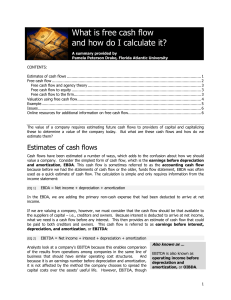
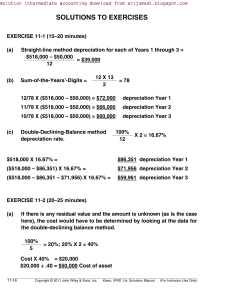

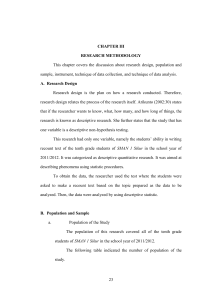
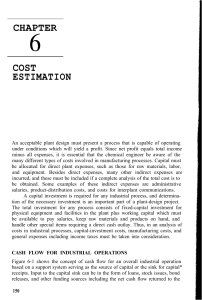
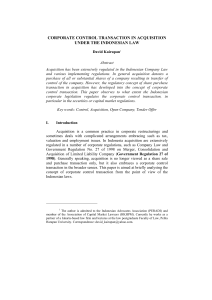
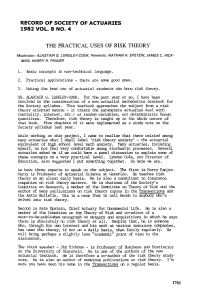

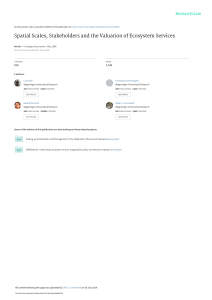
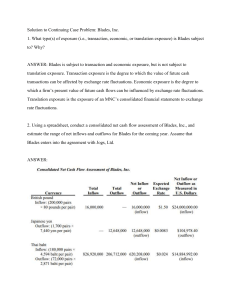
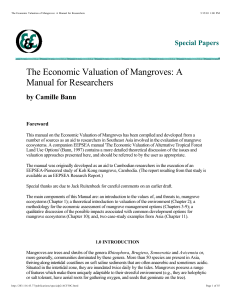
![[] The Handbook of Second Language Acquisition(BookZZ.org)](http://s1.studylibid.com/store/data/004344470_1-5ef9f0544a09fd54f26ba4a57e829bdf-300x300.png)